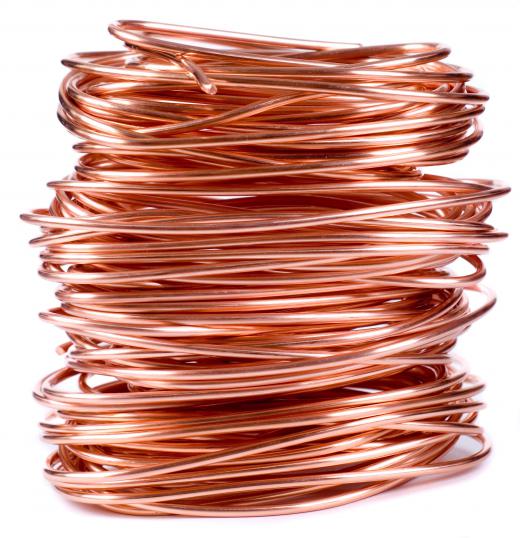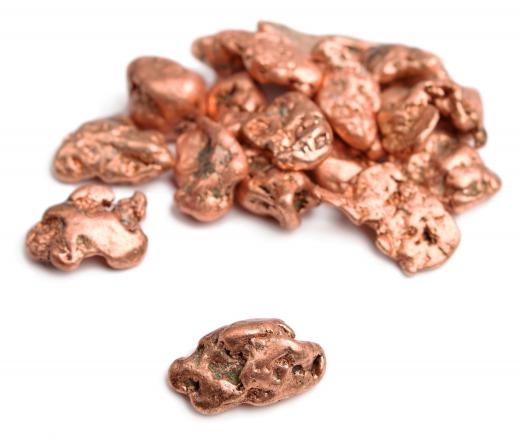What Is the Connection between Copper and Sulfuric Acid?
There are many connections between copper and sulfuric acid. Copper does not dissolve in many acids, but in concentrated sulfuric acid it breaks up by reacting. Combining copper and sulfuric acid can produce hydrates, or copper ions that are stuck to water. Electricity can be generated when copper comes in contact with the proper sulfuric acid solution. Copper salts can be made in a reaction of sulfuric acid and copper oxide.
Mixing copper and sulfuric acid causes the copper to change properties and oxidize, or react. This oxidizing makes copper dissolve into copper compounds that form both hydrates and ions. Copper ions are suspended in the solution because of the acidic properties of sulfuric acid, which also produces sulfate ions. Hydrates are like ions, except they use water to form complex ions with the copper ions. The other ions will remain suspended because they balance an electrical charge between the copper and sulfate ions.

Copper sulfate, a salt, is similar to the copper and sulfate ions. Once all the water is removed, those hydrate ions form a salt called anhydrous copper sulfate. This salt can be made directly be mixing sulfuric acid and copper oxide, a base. The water becomes separated in the reaction, and the salt forms naturally without drying. This concentrated form of copper and sulfuric acid can be used to produce electricity as well.

Producing electricity from copper sulfate is done using a solution of diluted sulfuric acid and anhydrous copper sulfate. Using diluted sulfuric acid will not oxidize the copper metal to be used as an electric plate. By using a copper plate, a zinc plate, and electric wires, it is possible to send the extra charge from the ions the salt makes in the weak acid to a small light bulb. This can be done by placing both plates in the solution and touching the wires to the metal part of the light bulb. Zinc will produce hydrogen gas when immersed in sulfuric acid, so, in the electricity set up, there might be enough gas produced to cause choking if inhaled.
Copper is less reactive than many metals, but it does react with sulfuric acid. This connection with sulfuric acid has many uses in industry and in learning chemistry. Sulfuric dioxide is produced when copper metal is heated up in concentrated sulfuric acid, and the resulting copper ions can easily react in several other copper related reactions.
AS FEATURED ON:
AS FEATURED ON:












Discuss this Article
Post your comments